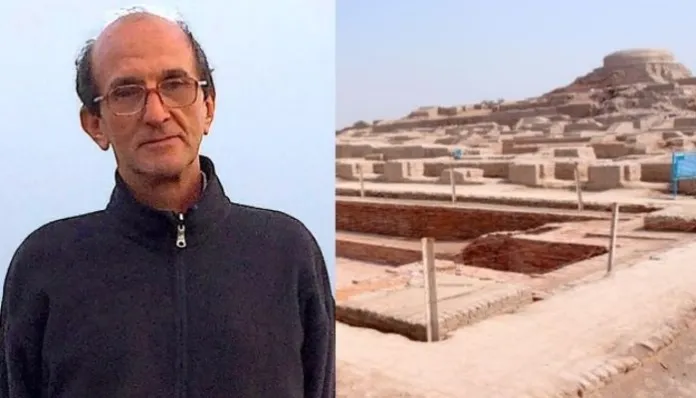NCERT Justifies Naming Harappan Civilization as ‘Sindhu-Sarasvati’ in New Textbooks, Citing Established Scholarship

News Mania Desk/Agnibeena Ghosh/21st August 2024
The recent decision to refer to the Harappan Civilization as the “Sindhu-Sarasvati Civilization” in newly released NCERT textbooks has sparked discussions across academic and public spheres. However, Michel Danino, the head of NCERT’s Social Science panel, asserts that this change is rooted in well-established archaeological scholarship, not political motivations.
Michel Danino, a visiting professor at the Humanities and Social Sciences department of IIT Gandhinagar, chaired the committee responsible for drafting the new social science textbooks under the National Curriculum Framework. The first textbook, titled Exploring Society: India and Beyond, aimed at Class 6 students, was recently released after significant delays. Danino explained that the delay was due to the committee having only five months to draft the textbooks. Despite this, he described the newly released textbook as a “good first step,” with plans to expand it with additional chapters in the coming year.
One of the most talked-about changes in the new textbook is the introduction of alternative names such as “Sindhu-Sarasvati” and “Indus-Sarasvati” to describe the Harappan Civilization. Danino, in an interview with The Indian Express, defended this decision, emphasizing that it was based on solid archaeological evidence rather than any political agenda. He stated that these terms have been in use among scholars for a long time and are not being imposed on students, but rather presented as part of the academic discourse surrounding ancient Indian civilizations.
“This is not a Hindutva thing,” Danino clarified, addressing concerns that the change might be politically motivated. He stressed that the inclusion of these alternative names is meant to reflect the broader spectrum of academic thought and is consistent with the findings of numerous archaeologists who have studied the region. According to Danino, using “Sindhu-Sarasvati” aligns with the understanding that the ancient civilization extended beyond the Indus Valley, encompassing the Sarasvati River region as well.
The NCERT’s decision to introduce these changes is part of the broader implementation of the National Education Policy (NEP) 2020, which seeks to overhaul the Indian education system. The NEP emphasizes the importance of exposing students to India’s rich cultural heritage, and the reclassification of the Harappan Civilization is seen as an effort to present a more comprehensive view of India’s ancient past.
Danino’s role in this process has been pivotal. As the chair of NCERT’s committee, he has been instrumental in guiding the content and direction of the new textbooks. His background as a scholar deeply involved in the study of Indian civilization adds credibility to the committee’s decisions. Danino’s association with prestigious academic institutions like IIT Gandhinagar further strengthens the legitimacy of the changes introduced in the curriculum.
In summary, the decision to refer to the Harappan Civilization as the “Sindhu-Sarasvati Civilization” in NCERT’s new textbooks is grounded in established scholarship and reflects a more nuanced understanding of ancient Indian history. The NCERT, under the guidance of Michel Danino, aims to present students with a comprehensive and accurate portrayal of India’s historical legacy, free from political influence. As these textbooks continue to be developed and expanded, they will likely offer even deeper insights into the complexities of India’s past, helping students gain a better understanding of their heritage.






